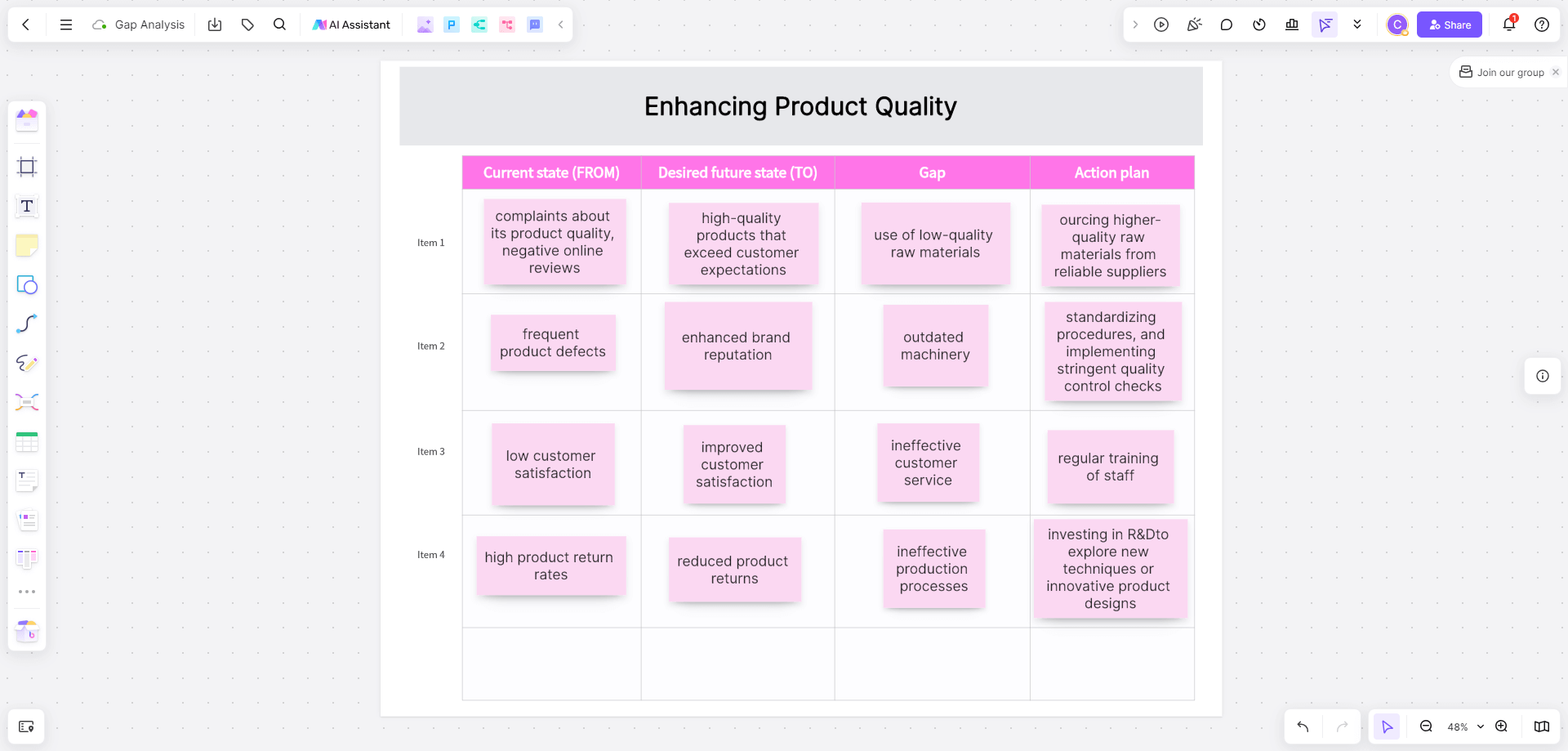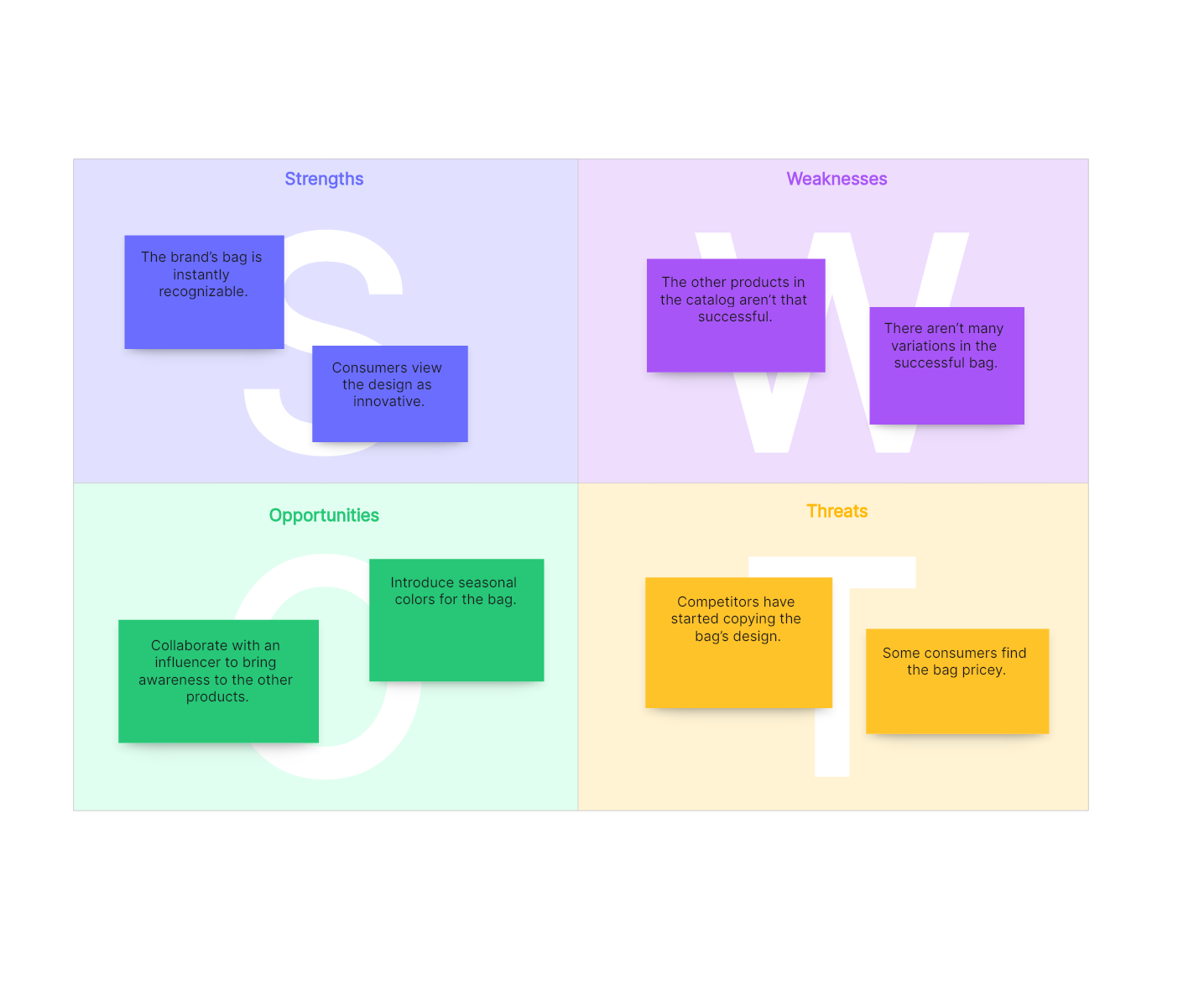Gap analysis is a crucial process for organizations aiming to improve their performance and achieve their goals. By understanding the current state, defining the desired state, and identifying gaps, organizations can develop effective action plans to bridge these gaps. Various examples of gap analysis, such as performance, market, process, skills, compliance, and IT gap analysis, demonstrate its wide applicability across different areas.
What is the Definition of Gap Analysis?

Gap analysis is a strategic tool used by organizations to identify the differences between their current state and their desired future state. This process involves comparing actual performance with potential or desired performance. By conducting a gap analysis, organizations can determine what steps need to be taken to achieve their goals and improve efficiency. It is a vital tool for identifying areas of improvement, setting realistic goals, and planning the necessary actions to bridge the gaps.
What are the Three Fundamental Components of a Gap Analysis?
The three fundamental components of a gap analysis are:
Current State: This component involves assessing the current performance or situation of the organization. It includes a detailed analysis of existing processes, resources, and outcomes. Understanding the current state is crucial as it forms the baseline for comparison.
Desired State: This component defines where the organization wants to be in the future. It includes setting clear objectives, goals, and standards that the organization aims to achieve. The desired state should be specific, measurable, achievable, relevant, and time-bound (SMART).
Gap Identification: The final component involves identifying the gaps between the current state and the desired state. This involves pinpointing specific areas where performance falls short and determining the reasons for these gaps. It includes analyzing the root causes and understanding the barriers that prevent achieving the desired state.
Different Gap Analysis Examples
1. Performance Gap Analysis

A sales team conducts a performance gap analysis to determine why their quarterly sales are 20% below target. By analyzing data, they find that the gap is due to insufficient training on new product features. They implement a training program to bridge this gap. It is useful for identifying discrepancies between actual and desired performance levels, helping organizations enhance productivity and achieve targets.
2. Market Gap Analysis

A tech company performs a market gap analysis to identify potential areas for new product development. They discover a gap in the market for affordable smart home devices for small apartments. The company decides to develop a new line of compact, budget-friendly smart devices. The gap analysis helps businesses identify unmet customer needs and opportunities for new products or services, ensuring market relevance and growth.
3. Process Gap Analysis

A manufacturing firm conducts a process gap analysis to find inefficiencies in their production line. They identify a bottleneck at the assembly stage due to outdated machinery. By upgrading the equipment, they reduce production time by 15%. It enables organizations to streamline processes, eliminate inefficiencies, and improve overall operational efficiency.
4. Skills Gap Analysis

An HR department carries out a skills gap analysis to determine the training needs of their employees. They find that employees lack advanced data analytics skills. The company introduces a training program to enhance these skills, ensuring employees are prepared for future challenges. The gap analysis is critical for identifying and addressing skill deficiencies within the workforce, promoting employee development and organizational capability.
5. Compliance Gap Analysis

A healthcare provider performs a compliance gap analysis to ensure they meet new health and safety regulations. They discover gaps in their documentation and employee training. By updating their compliance policies and conducting mandatory training sessions, they achieve full compliance. It is essential for identifying gaps in regulatory compliance, helping organizations avoid legal issues and maintain industry standards.
6. IT Gap Analysis
An IT department conducts an IT gap analysis to assess its current infrastructure against future technology needs. They identify a gap in cybersecurity measures, which poses a risk to data security. The organization invests in advanced cybersecurity solutions to protect their systems. It helps organizations assess and enhance their IT infrastructure, ensuring it meets current and future technological demands.
How to Conduct a Gap Analysis?
Conducting a gap analysis involves several key steps:
Define the Scope and Objectives: Start by clearly defining the scope of the analysis and the objectives you want to achieve. Determine what areas you will focus on and what you hope to accomplish through the gap analysis.
Collect and Analyze Data: Gather data on the current state of performance. This may involve collecting quantitative data, such as metrics and performance indicators, as well as qualitative data, such as feedback from stakeholders. Use various data collection methods, including surveys, interviews, and observations.
Identify the Desired State: Define the desired state by setting clear goals and objectives. Use benchmarks, industry standards, and best practices to determine what the desired performance should look like.
Identify Gaps: Compare the current state with the desired state to identify gaps. Analyze the data to pinpoint specific areas where performance falls short and determine the root causes of these gaps.
Develop an Action Plan: Create a detailed action plan to address the identified gaps. This plan should include specific steps, timelines, responsibilities, and resources needed to bridge the gaps and achieve the desired state.
Implement and Monitor: Implement the action plan and monitor progress regularly. Track key performance indicators (KPIs) to measure improvements and make adjustments as necessary to ensure the goals are being met.
Using Boardmix for Gap Analysis
Boardmix is a powerful online tool that can greatly assist in conducting a gap analysis. With its user-friendly interface and comprehensive features, Boardmix makes it easy to visualize and analyze data, collaborate with team members, and create detailed action plans. Here are some ways Boardmix can be used for gap analysis:
Data Visualization: Boardmix offers various visualization tools, such as charts, graphs, and diagrams, that can help you clearly present your data and identify gaps. You can create detailed visual representations of the current state and desired state, making it easier to compare and analyze.
Templates: Boardmix provides a range of templates specifically designed for gap analysis. These templates offer a structured approach to conducting the analysis and ensure that you cover all the necessary components. You can customize the templates to fit your specific needs and save time by not having to create them from scratch.
Action Planning: Boardmix helps you create detailed action plans to address the identified gaps. You can outline specific steps, assign responsibilities, set deadlines, and track progress within the platform. This ensures that your action plan is organized and easily accessible to all team members.
By leveraging Boardmix's features and templates, you can streamline the gap analysis process, enhance collaboration, and develop effective strategies to bridge the gaps and achieve your organizational goals.
What are the Best Tools and Techniques for Gap Analysis?
Several tools and techniques can enhance the effectiveness of a gap analysis:
SWOT Analysis: SWOT analysis (Strengths, Weaknesses, Opportunities, Threats) is a powerful tool for identifying internal and external factors that impact performance. It helps in understanding the current state and identifying areas of improvement.

PEST Analysis: PEST analysis (Political, Economic, Social, Technological) is used to analyze external factors that could affect the organization. It provides insights into the broader environment and helps in identifying potential gaps.

Benchmarking: Benchmarking involves comparing your organization's performance with industry standards or best practices. This helps in identifying gaps and setting realistic goals based on proven success.
Root Cause Analysis: This technique involves identifying the underlying causes of performance gaps. Tools like the Fishbone Diagram (Ishikawa) or the 5 Whys method can help in understanding the root causes and addressing them effectively.
Boardmix: As discussed earlier, Boardmix is an excellent tool for conducting gap analysis. Its data visualization, collaboration, and action planning features make it a comprehensive solution for organizations looking to improve their performance.

Balanced Scorecard: The Balanced Scorecard is a strategic planning and management tool that helps organizations align their activities with their vision and strategy. It provides a framework for measuring performance and identifying gaps across different perspectives, such as financial, customer, internal processes, and learning and growth.
By utilizing tools and techniques like SWOT analysis, PEST analysis, benchmarking, root cause analysis, balanced scorecard, and Boardmix, organizations can enhance the effectiveness of their gap analysis process.









